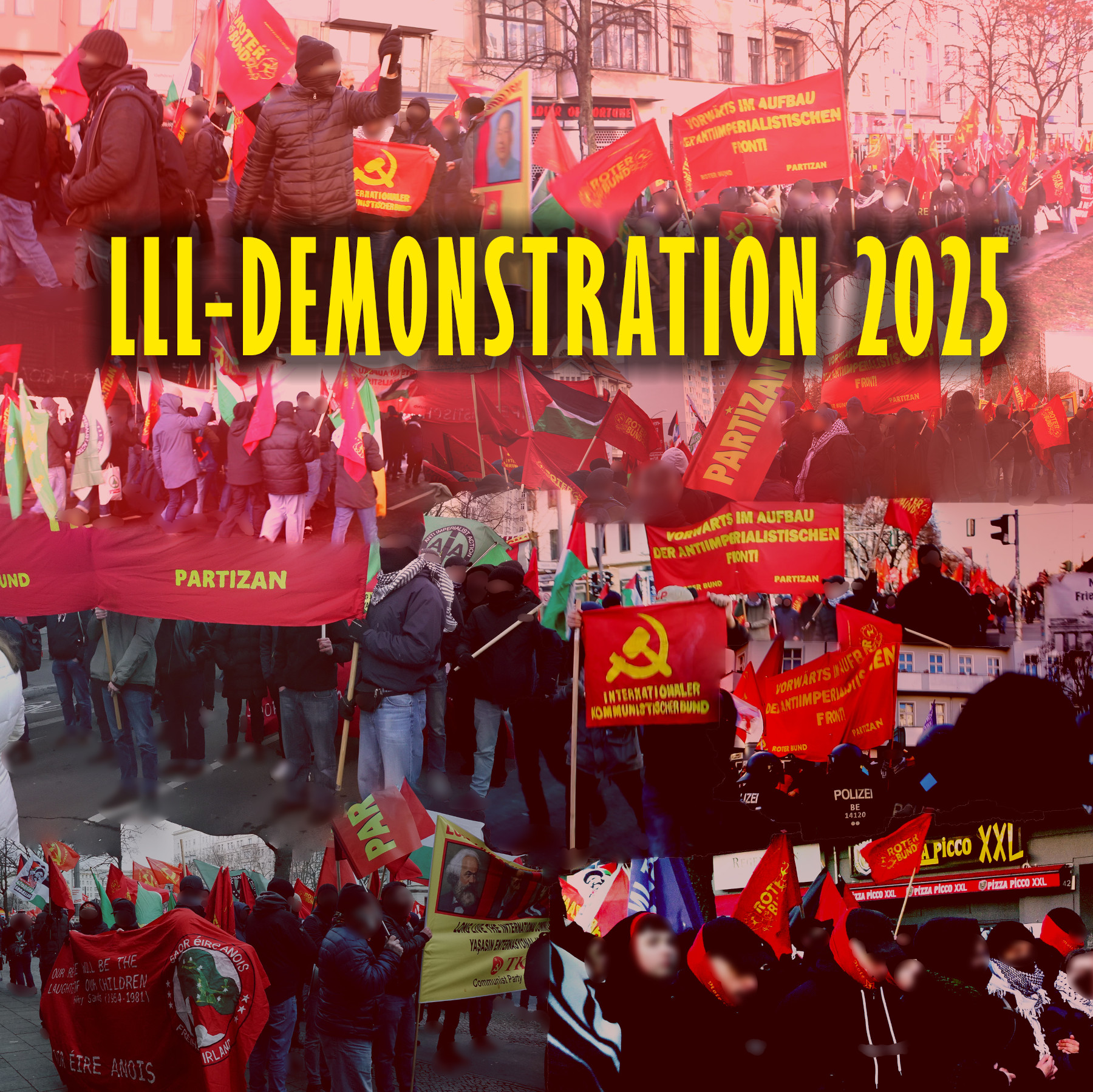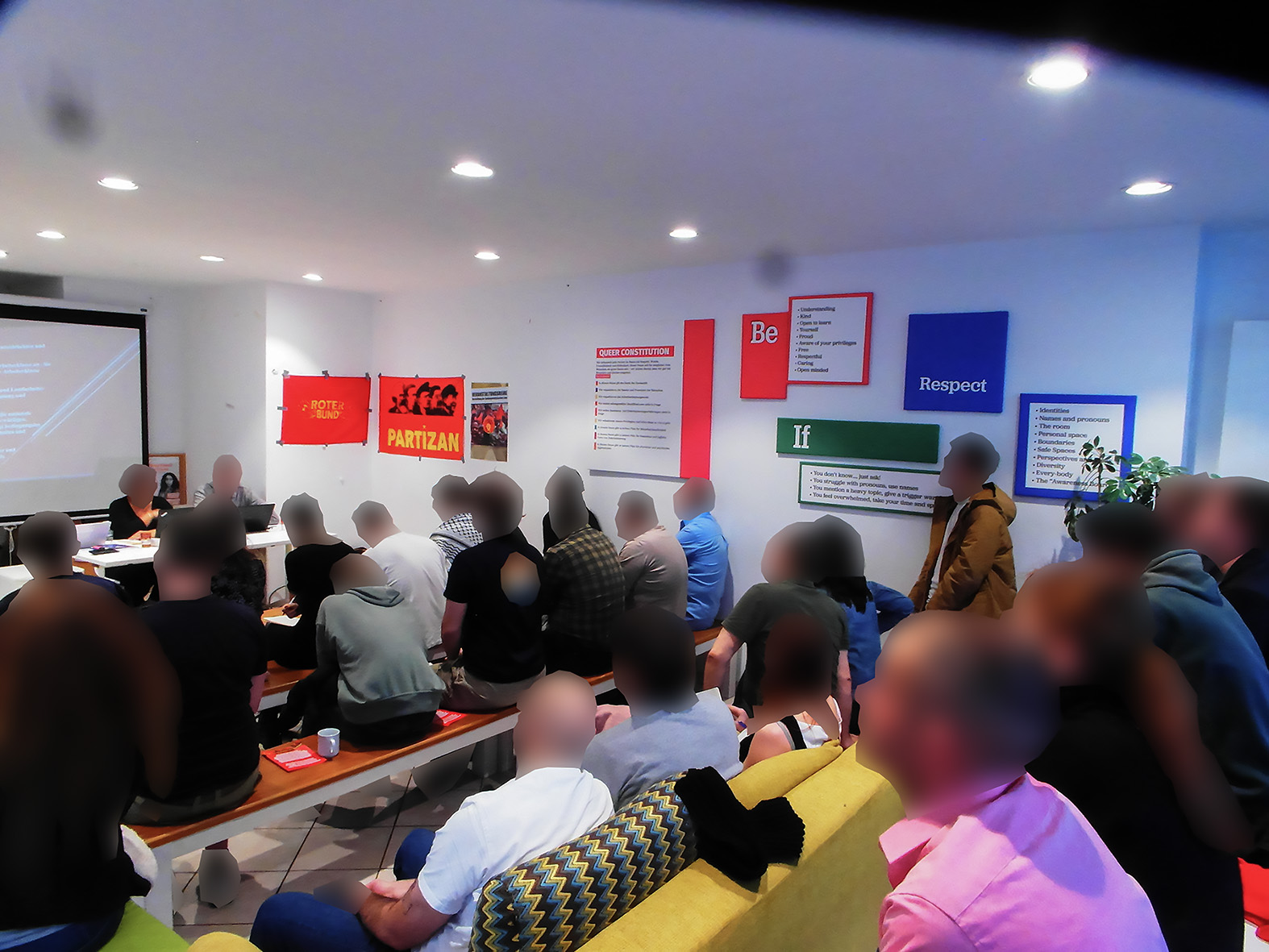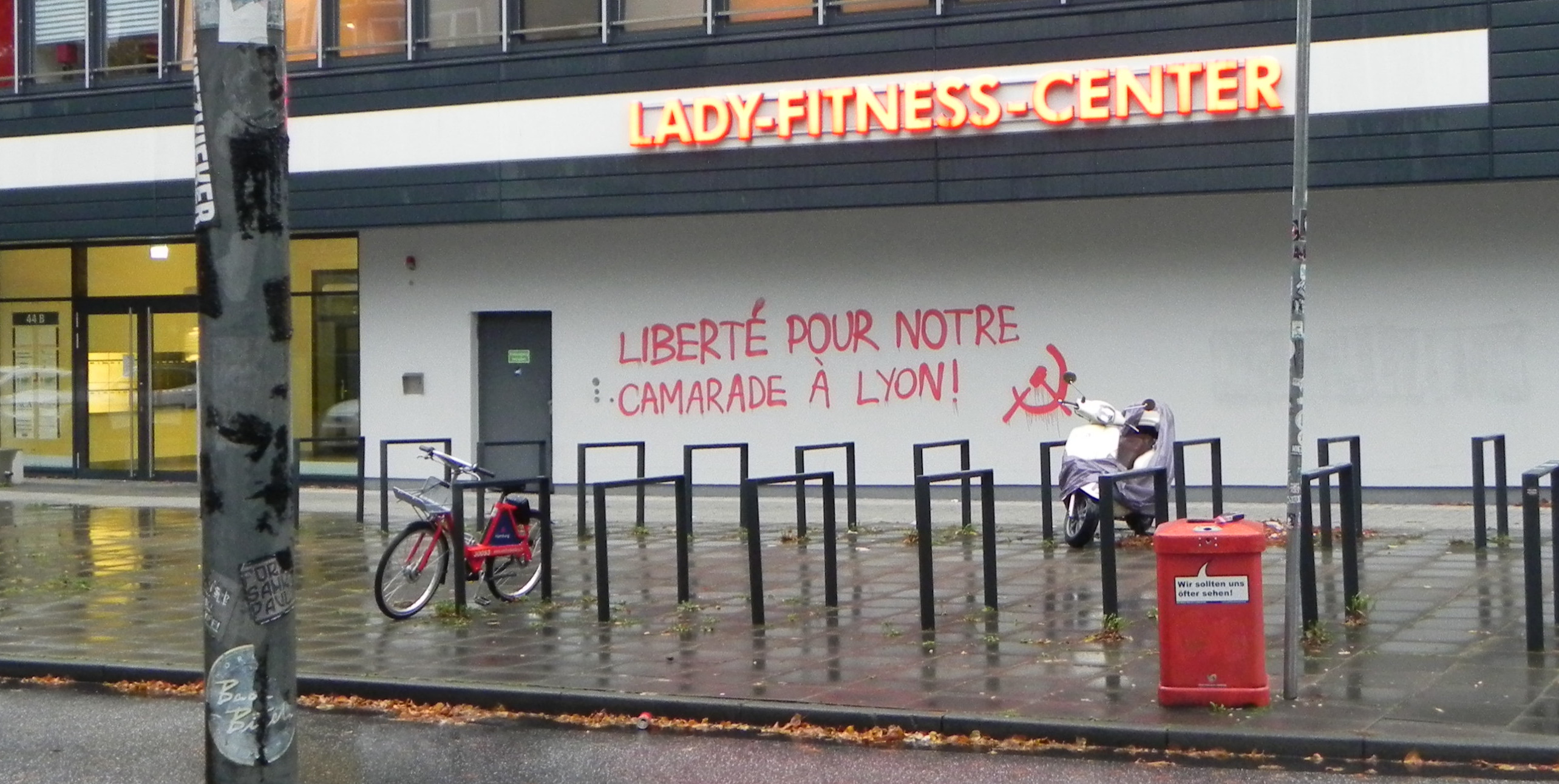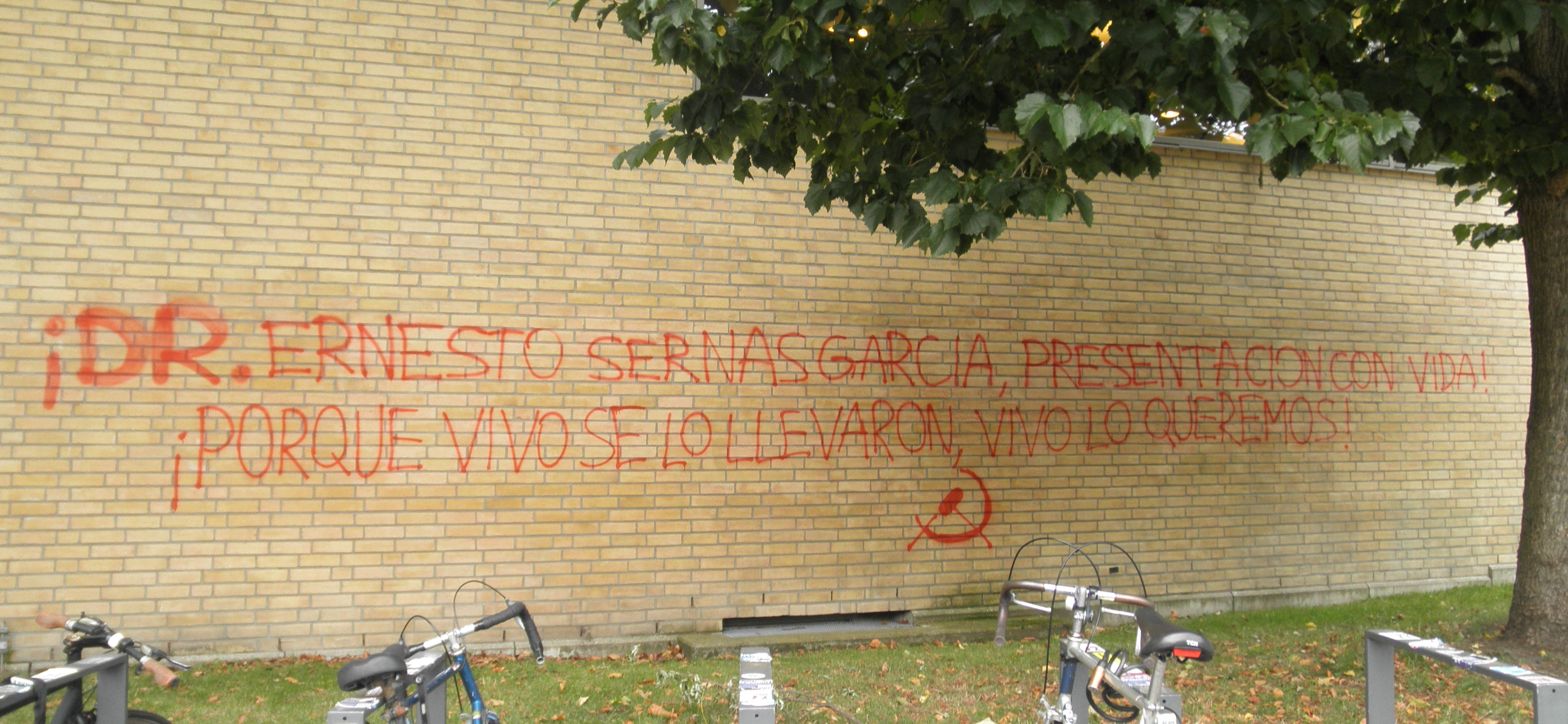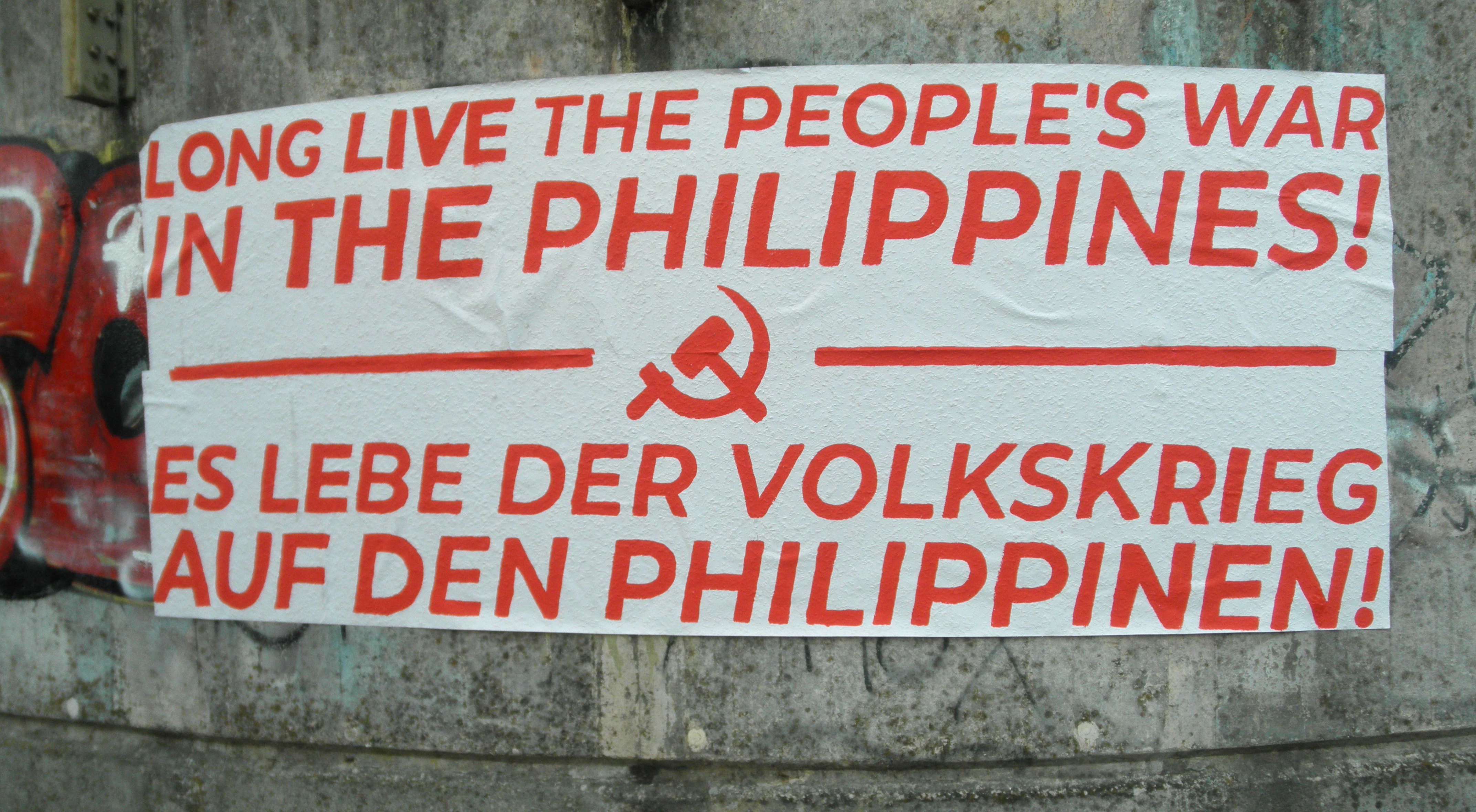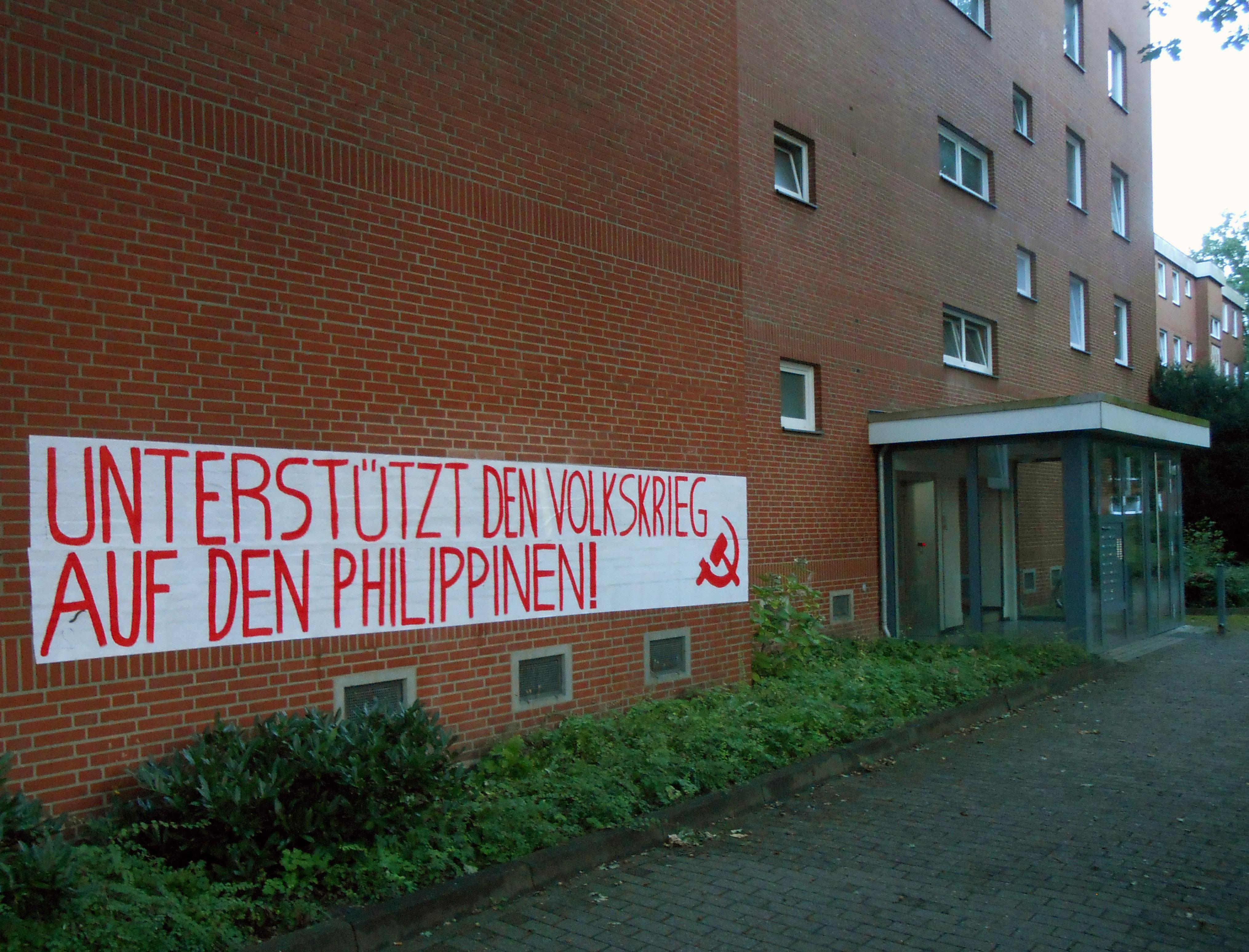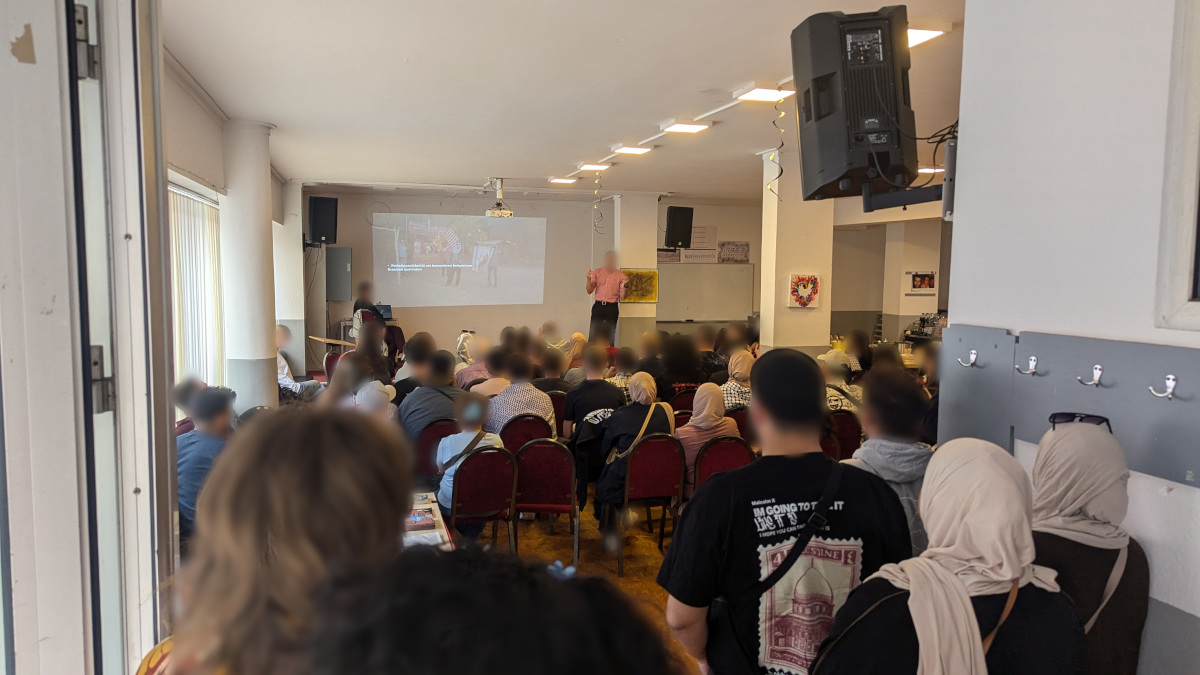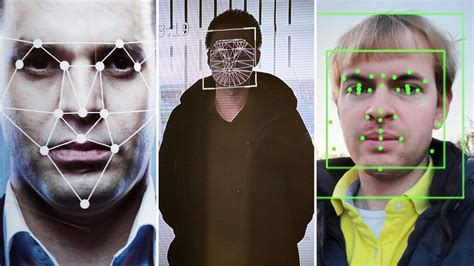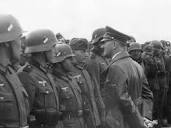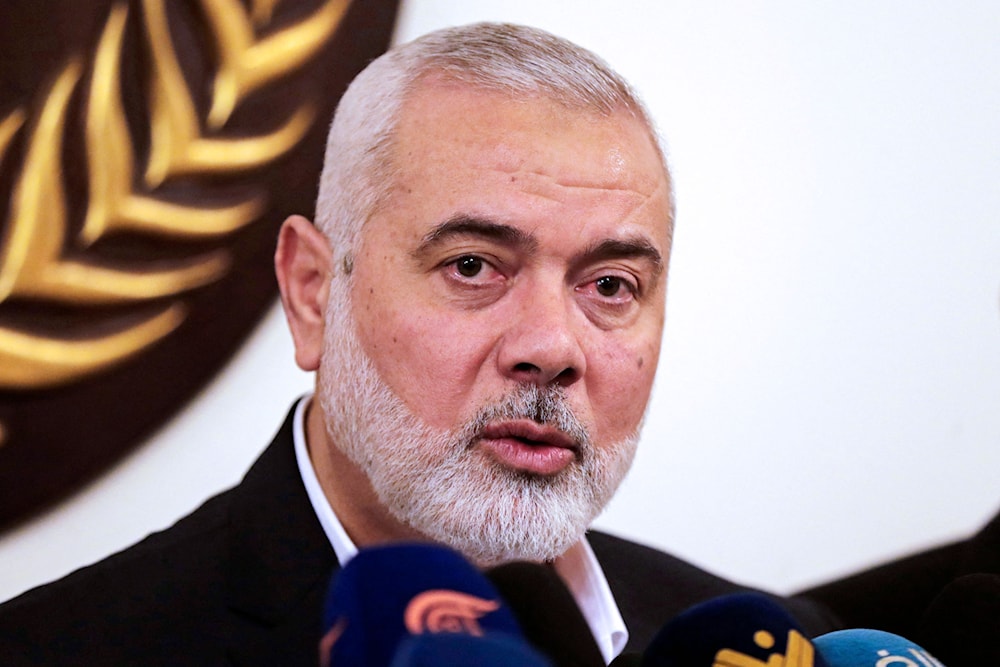Proletarians of all countries, unite!
Celebrate the 50th anniversary of the Great Proletarian Cultural Revolution with People’s War until communism!
The Great Proletarian Cultural Revolution (GPCR) constitutes the highest milestone in the history of the class struggle of the proletariat. This year marks 50 years from its initiation in 1966 and within the context of the 50th anniversary, the communist parties and organizations that sign this declaration consider it fundamental take a stand on this great event. The GPCR is principally a political revolution, and given its significance, it must mobilize every communist and revolutionary to propagandise it in a bold and determined way. But this is not enough, at the same time, it is necessary to develop a sharp struggle against revisionism and all opportunism which is aiming to present the GPCR as separated from the current problems of the ICM.
The lessons from the GPCR demand a clear demarcation and brand the revisionists who are trying to haggle with it, generate confusion and catch gullibles. We need to see clearly that the revisionist and capitulationist line in Peru – today with an own organization PCP/MOVADEF and the clique of José in VRAE –, the avakianism with its absurdity of the “new synthesis”, prachandism and its “socialism of the 21th century” and its “multiparty competition”, among other dreadful expressions of the new revisionism, trying to portray Chairman Mao into an ordinary liberal and reinterpret the GPCR as an event without validity and revolutionary sharpness. Their vile lies smash into pieces by the strategic offensive of the proletarian world revolution and the campaign for Maoism we are developing. Instead, the international proletariat, full of communist pride, hoisting its undamaged red flag, to higher peaks, is going to advance in a tireless struggle towards the classless society, the communist society. Hoist, defend and apply Maoism!
On the international situation and class struggle
The current international situation would be incomprehensible without the theory of class struggle and its development by Maoism. Only through this theory we understand that the fundamental contradictions of this epoch are the ones between oppressed nations and imperialism, between proletariat and bourgeoisie and inter-imperialists contradictions, that today the contradiction between socialism and capitalism exists only in the ideological and historical field and that the main contradiction is between oppressed nations and imperialism; that imperialism comprises the powers and super-powers that develop through collusion and rivalry, and the oppressed countries, the Third World, are the loot of the struggle for the distribution of the world, at the same time they are the base of the world revolution and revolutionary storm centres; that the revolution is the main political and historical tendency; and that the proletarian world revolution is in its third phase, the strategic offensive, an epoch of the ‘next 50 to 100 years’, in which imperialism is decaying further and will be completely swept away by the proletarian world revolution through the world people’s war, a process that was initiated by the new great wave of the proletarian world revolution.
In the relation to this understanding of the three fundamental contradictions in the current world – a decisive issue which is negated by the new revisionism – about which the main struggles of Marxism and revisionism are taking place.
Lenin teaches: “The economic relationships of imperialism constitute the basis of the existing international situation. The history of the XX Century has been defined completely by this new phase of capitalism, its last and highest phase”; and that the world’s division between oppressed nations and oppressing nations is a distinct characteristic of imperialism. Therefore, to understand the current situation we cannot start from the fundamental contradiction of capitalism, since we are in its superior and last phase, imperialism.
One of the laws of class struggle is violence, exacerbated in the epoch of imperialism, since imperialism is war and political reaction all along the line. The imperialist oppression transforms the oppressed nations into areas of distribution, meaning in economic territories turned into colonies or semi-colonies of one or another imperialist power or super-power. The imperialists strive for the partition of those countries and the new distribution to reconfigure the map of the so-called Greater Middle East through the war of aggression, in the midst of a sharp conflict for maintaining their hegemony and the search for a way out of its profound economic crisis. The civil war in Syria is an expression of this law.
The events in the so-called Middle East represent an oddly assorted accumulation of indecipherable facts without perspective, without the important tool of analysis and transformation, which is the theory of class struggle, applied to the international situation it includes the thesis of Chairman Mao on ‘three worlds that are delineated’. To comprehend such a complex panorama, like what is going on in Syria, Iraq or Turkey - where an intricate coming and going of millions of human lives permanently drives the historical development - we need to firmly grab the class struggle. Only by applying the theory of class struggle and including the fundamental contradictions of the current world it is possible to comprehend that the so-called Middle East today forms the part of the globe where the fundamental contradictions are converging; that the imperialist war of aggression is for the dismemberment and new distribution of those oppressed countries – unleashed there since the early 1990ies - sharpening all the contradictions and spurring the revolution; that the main thing for us is to struggle to lead the storm of the armed struggle of the oppressed nations which is rising there against imperialism, mainly Yankee imperialism, without disregarding the atomic superpower Russia and all the other imperialist powers; and that the current problem is that the struggle is not developing correctly due to the lack of political guidance by the Communist Party.
Starting from what Chairman Mao developed, we can comprehend the current situation of countries like Ukraine, Syria, Iraq, Libya and Afghanistan, where two fundamental contradictions sharpen and three forces act. The two contradictions are: 1) the contradiction between oppressed nations/people and imperialism, main contradiction, and 2) the inter-imperialist contradiction, secondary contradiction. The three forces are: 1) US-imperialism, sole hegemonic superpower, and its temporally allies; 2) the atomic superpower Russia, and its temporally allies; 3) the oppressed nations, including all its classes and national minorities, excepting a bunch of traitors, followers of the theory of national subjugation. These forces (oppressed nations and national minorities) are temporary and relatively weak, since the Communist Party which unifies them in the United Front against the imperialist aggression is still missing, to prevent them from being used as peons or boots on the ground by the imperialists.
To solve the main contradiction in these countries, a Marxist-Leninist-Maoist Communist Party is needed to lead a United Front of national resistance, capable of uniting all the willing forces to fight to defeat the imperialist invader and culminate the revolution of new democracy through people’s war. It is not to misinterpret what was clearly established by Chairman Mao about the independency and self-determination inside the United Front. The desire for freedom of the peoples of the so-called Middle East and the desire to throw off every foreign yoke will not be anything else but illusions if Communist Parties are not constituted or reconstituted, according to the situation, which are firmly grasping the laws of class struggle and in consequence, transform their armed struggles into peoples’ wars.
We insist, without the real proletarian leadership and its organized vanguard, the national struggle - including the struggle of the national minorities - is condemned to serve any command staff, and such it is condemned to subjugation. These are ineluctable laws of the development of class struggle and to try denying them or declaring them outdated or for anything else, is revisionism.
Both, in the current international situation and in the struggle for the establishment and defence of the dictatorship of the proletariat, the class struggle is the guideline that allows us to connect every event to each other and to find and handle the laws which influence its development. Therefore, we must study the international situation in the light of Maoism. And it is in the light of Maoism that we must struggle to lead the revolution in each country, as part and to serve the proletarian world revolution.
The Great Proletarian Cultural Revolution – GPCR
The Great Proletarian Cultural Revolution constitutes, historically and politically, the highest expression of the proletarian class struggle on international level, the defence of the dictatorship of the proletariat, conceived as an all-round dictatorship over the bourgeois.
In a society divided by classes, the class struggle is a historic law. The Marxists, in consequence, apply it to all phenomena of social life, recognizing it in the most diverse expressions of contemporary life. The class struggle develops in the ideological, political, economic and military fields; but above all it is fundamental to comprehend that the class struggle necessarily leads to the dictatorship of the proletariat. As the great Lenin said: “Only he is a Marxist who extends the recognition of the class struggle to the recognition of the dictatorship of the proletariat”. In this sense, the GPCR is the struggle for the establishment of the all-around dictatorship of the proletariat, the recognition of the objective existence of classes in the whole period of construction of socialism and the dictatorship of the proletariat, of antagonistic contradictions between classes, of the bourgeoisie inside the party itself and of the continuation of class struggle during the whole period of socialism until communism.
And like it was established since the beginning of the GPCR: “Although the bourgeoisie has been overthrown, it is still trying to use the old ideas, culture, customs and habits of the exploiting classes to corrupt the masses, capture their minds and endeavour to stage a comeback. The proletariat must do the exact opposite: it must meet head-on every challenge of the bourgeoisie in the ideological field and use the new ideas, culture, customs and habits of the proletariat to change the mental outlook of the whole of society”.
With the Great Leap Forward and the establishment of the People’s Communes in 1957 -1958 it was given an effective advance in the development of collective property economics and the socialist revolution, constituting a victory against the right opportunism in a period in which, on an international level, capitalism was restoring in the USSR and in the rest of the countries of Eastern Europe.
Chairman Mao warned in 1962: “don’t ever forget the class struggle”. The same year, with the socialist education movement, it was possible to give a new impulse to the struggle against the followers of the capitalist road in the countryside. In 1965, the criticism of philosophy and the criticism of the art forms which were driven by bourgeois and revisionist elements in the field of culture, prepare the soil for launching the GCPR in 1966. Initially, those who tried to control the implementation of the Cultural Revolution were revisionist elements which nested within the highest leadership of the Party, whose counter-revolutionary way of actin, was exposed later. People like Liu Shao-chi, then President of the People’s Republic of China, his front man and chief of the Party in Peking, Peng Sheng, the member of the Party Committee in Peking and the person responsible for propaganda and press organisms of the CPC and of the state, Lu Ting-yi, among others, frenetically plotted their antiparty and antisocialist positions for restoring capitalism.
In this sense, Chairman Mao’s line has comprehended this fundamental issue: “The socialist society emerges from the bosom of the old society. It is not easy to liquidate the idea of the private property formed during thousands of years of class society, nor the force of habit or the ideological and cultural influence of the exploiting classes linked to the private property. The spontaneous forces of the petty bourgeoisie in the city and on the countryside constantly create new bourgeois elements. As the ranks of the workers grow in number and range, some impure elements infiltrate them. And after the conquest of power and living in an environment of peace, a certain number of people in the ranks of the cadres of the Party and of the state organisms degenerate. At the same time, in the international level, the imperialism, headed by the USA, and the reactionary of the diverse countries strive to eliminate us through the counter-revolutionary double tactic: threats of war and ‘peaceful evolution’. The contemporary revisionist group, with the direction of the Soviet Union Communist Party as its centre, tries to defeat us as well, by all its possible means. If we forget the class struggle in these circumstances and abandon our vigilance, we would run the risk of losing the Power and allow that capitalism restores”.
Under Chairman Mao’s direction, the directive of the XI Plenary Session of the Central Committee of the 8th of August 1966, it was clearly defined: “The Great Proletarian Cultural Revolution now unfolding is a great revolution that touches people to their very souls and constitutes a new stage in the development of the socialist revolution in our country, a stage which is both broader and deeper.[…] Although the bourgeoisie has been overthrown, it is still trying to use the old ideas, culture, customs and habits of the exploiting classes to corrupt the masses, capture their minds and endeavour to stage a comeback.” And that in the cultural revolution: “At present, our objective is to struggle against and overthrow those persons in authority who are taking the capitalist road, to criticize and repudiate the reactionary bourgeois academic “authorities” and the ideology of the bourgeoisie and all other exploiting classes and to transform education, literature and art and all other parts of the superstructure not in correspondence with the socialist economic base, so as to facilitate the consolidation and development of the socialist system”.
It were the masses of young students, in 1966, animated and stimulated by the Communist Party, with Chairman Mao in the fore, who started the mass criticism and, hence denounced the handful of stubborn revisionists that usurped the power in different departments of the party itself and the state. The all-around dictatorship of the proletariat was necessary to defeat the gang of opportunist and revisionist followers of the capitalist road. There could not remain any place in the party and in the state for bourgeois elements, but to smash those individuals was not an administrative problem, but was about the broad mass mobilization and the criticism which they did.
To defeat and expose the opposition of the followers of the capitalist road, the Party, under the correct revolutionary line of Chairman Mao, needed to base itself on the masses, stimulating their own initiative. Like the directive of the 8th of August 1966 pointed out: “Trust the masses, rely on them and respect their initiative. Cast out fear. Don’t be afraid of disturbances. Chairman Mao has often told us that revolution cannot be so very refined, so gentle, so temperate, kind, courteous, restrained and magnanimous. Let the masses educate themselves in this great revolutionary movement and learn to distinguish between right and wrong and between correct and incorrect ways of doing things. Make the fullest use of big-character posters and great debates to argue matters out, so that the masses can clarify the correct views, criticize the wrong views and expose all the ghosts and monsters. In this way the masses will be able to raise their political consciousness in the course of the struggle, enhance their abilities and talents, distinguish right from wrong and draw a clear line between ourselves and the enemy”.
The Great Proletarian Cultural Revolution is the method to mobilize the masses and them express all their creative power in the criticism of the revisionists, “it is a method to uncover all the dark that is in the party”, said Chairman Mao. At the IX Congress of 1969 it was cited what Chairman Mao exposed in a conversation in February 1967: “In the past we waged struggles in rural areas, in factories, in the cultural field, and we carried out the socialist education movement. But all this failed to solve the problem because we did not find a form, a method, to arouse the broad masses to expose our dark aspect openly, in an all-round way and from below”.
The form, the means, the method was the critic by the masses. This allowed to fully bring into play the initiative of masses to expose the antiparty and antisocialist “black gang”, followers of the capitalist road, who succeeded in usurping a part of the power. The problem was not only the removal of this or that leader of the followers of the capitalist road, the great task consisted in mobilizing the masses and to make them bombard the bourgeois headquarters on their own initiative. This is still important, because the problem was not just fighting against a political line, the issue was also the struggle against the organisational line which Liu Shao-chi built up and which allowed him to have a significant presence in different state and party entities through impenitent followers of the capitalist road.
Initiated among the sections of the youth, principally students, the GPCR soon propagated to the broad masses of workers and peasants. At the end of 1966 the class struggle sharpened in Shanghai. In January 1967 the revolutionary storm breaks out in this important industrial city and a clique of usurpers was defeated, recapturing the proletarian power and re-establishing the dictatorship of the proletariat. Chang Chung-chiao had an active role in these events, giving a proper direction in this struggle. The revisionists who were installed in the Shanghai municipality were defeated and in February 1967 the Revolutionary Committee of the Shanghai Municipality is founded as the new power organism of the working class, led by the Party, concentrated in the Revolutionary Committees.
Later, in March 1967 progress was made in the Great Strategic Plan for the Great Proletarian Cultural Revolution. The document reads as following: “This document could be distributed to the whole country to be acted upon accordingly. The army should give military and political training in the universities, middle schools and the higher classes of primary schools, for levels and groups. This should help in re-opening school classes, strengthening organization, setting up the leading bodies on the principle of the "three in one combination" and carrying out the task of "struggle-criticism-transformation." First, experiments should be done at selected locations and then expanded step by step. And the students should be convinced to implement the teaching of Marx that the proletariat can only achieve its final emancipation by emancipating all mankind, and that those teachers and cadres who have made mistakes in military and political training should not be excluded. Apart from the aged and the sick, these people should be allowed to take part so as to facilitate their re-education. If all this is not done conscientiously, it is difficult to solve the problems”.
In the IX Congress in 1969 it was decided as a fundamental line of the Party for the whole historical phase of socialism, issues that Chairman Mao had established in a plenum of the Central Committee in 1962: “The socialist society will last a relatively long historical phase. During this historical phase of socialism, classes, class contradictions and class struggle will still exist; the struggle between the socialist and the capitalist road and the danger of capitalist restoration exists. We have to comprehend how long and complicated this struggle is and raise our vigilance. It is necessary to carry out the socialist education. It is necessary to understand and handle the problems of class contradictions and class struggle correctly and to precisely distinguish the contradictions between us and the enemy that exist in the bosom of the people, and to handle them in a correct way. Otherwise, a socialist country like ours will convert into its opposite, will degenerate, and the restoration will occur. From now on, we have to talk about this every year, every month and every day, so that we have a relative clear comprehension of this problem and follow a Marxist-Leninist line”.
On Restoration: lessons for the future
The counter-revolutionary coup that the revisionists conducted against the Communist Party of China, against the state of the dictatorship of the proletariat, is a sign of how sharp the class struggle and the two-line struggle in the Party becomes in the society during socialism. Chairman Mao, in May 1963, facing the advance of people like Liu Shao-chi, prudently pointed out the risks which entail a grave situation like this: “Then it would not take much time, maybe some years or a decade or several decades at most, to create a counter-revolutionary restoration at a national level, to transform the Marxist-Leninist party to a revisionist party or a fascist party and the whole China will change its colour”.
Later, in 1966, continuing this issue, he warned: “The bourgeois representatives that had infiltrated the Party, the government, the army and the different sectors of the cultural sector are a bunch of counter-revolutionary revisionists. If the possibility arises, they would take the Power and transform the dictatorship of the proletariat in the dictatorship of the bourgeois”.
The bourgeois dictatorship established in October 1976 is a fascist dictatorship, and the party that leads it is a fascist party, only revisionists and opportunists keep calling the monstrosity that governs in China today a Communist Party. Chairman Mao warned of this again in 1976:
“I have never stopped believing that in China there is a possibility of a restoration of capitalism on a great scale. A countrywide scale. If this restoration comes, bad things will come. Sufferings will be back, but, inevitably, the revolution will also come back”.
The same is pointed out in a letter of the same year that he sent to comrade Chiang Ching. We quote a fragment:
“In the struggle of the past ten years
I have tried to reach the peak of the revolution,
But I had failed…
Maybe you can reach the peak.
If you fail you will drown in a bottomless abyss,
Your body will be torn apart,
Your bones will break.
No agreement with the others is good.
If the sword turns around, and I think it had been turned
against the revolution. One more time it will be needed
the guerrilla warfare…the new Yenan …”
And last, also in words written by Chairman Mao in 1966 to comrade Chiang Ching: “In China, after the emperor was overthrown in 1911, no reactionary was able to stay long in power. If the Rightists were to stage an anti-Communist coup d’etat in China, I am sure they would have no peace either and their rule would most probably be short-lived, because it would never be tolerated by the revolutionaries who represent the interests of the people constituting more than 90 per cent of the population”. Conclusion: the perspectives are brilliant, but the way is tortuous. These two formulations continue to be valid.
It is important to highlight that all of this occurs in the period that the Chairman pointed out as the ‘next 50 to 100 years’ in which the rule of imperialism will be brought down, time of the major decomposition of imperialism and in which it will be swept from the face of the earth by the proletarian world revolution. An important thesis to rub in the face of contemporary opportunists and revisionists.
The Communist Party of China, its construction and the two-line struggle during the GPCR
In 1974 the brochure “A basic understanding of the Party” was published in China. In this important document, the CPC draws a balance of the experience of the Party and its role in the GPCR; it is also synthesized in the basic program and the basic line of the party, the construction of the party, the two-line struggle and the tasks of education and re-education led by it. This brochure is an advanced exposition of the principles which establish what an authentic Communist Party must be and which most consistent application was performed by Chairman Gonzalo, developing the Marxist theory on the party with the thesis of militarization and the concentric construction.
The brochure explains the reflection of the class struggle in the party as two-line struggle, sometimes high, sometimes low, as the tide; the importance of ten great two-line struggles that were fought in the Communist Party of China are highlighted, including the struggles against Liu Shao-chi and Lin Piao, and there is no doubt it was necessary to develop some more. There was fought a two-line struggle against Chen Po-ta and Teng Siao-ping but, finally, taking advantage of a favourable correlation of forces, these two took advantage of their own forces to strike at the Left and to transform the Party into a fascist party.
The GPCR, the criticism of the masses of Lin Piao, the movement for the rectification of style of work, initiated and led by Chairman Mao, was able to contain and smash the counter-revolutionary offensive that Lin Piao and Liu Shao-chi tried to drive to change the party character and restore capitalism. Unquestionably the party was purified. Nevertheless, to advance towards the classless society, one, two or three cultural revolutions were not enough, but many more. During the GPCR, the two-line struggle in the bosom of the Communist Party of China reached never seen levels, giving huge lessons to the coming revolutionary generations. In the same brochure “A basic understanding of the Party” it was sustained: “The two-line struggle within the Party over the question of its character has always been very sharp. All of the leaders of the opportunist lines have always tried by every means to pervert the character of the political party of the proletariat, in order to serve their own criminal goal of sabotaging the proletarian revolution. […] The Great Proletarian Cultural Revolution and the movement to criticise Lin Piao and rectify the style of work personally initiated and led by Chairman Mao, completely smashed the criminal plots of Liu Shao-chi and Lin Piao to change the nature of our Party and to restore capitalism. Our Party came out purified, more solid, and more vigorous than ever. The struggle between the two lines inside the party profoundly demonstrates that safeguarding the character of the Party is a matter of great importance. It' is intimately connected with the destiny of the Party and the state, and with the question of whether the revolution will win victory or go down to defeat. To continually build our Party, making use of Marxism-Leninism-Mao Tsetung Thought, to expose and frustrate the plots of the revisionists to pervert the character of the Party — this will provide the guarantee that our Party will always retain its proletarian character”.
Some of the problems of this two-line struggle that developed in the bosom of the Communist Party of China and in the Chinese society were: the handling of the two-line struggle itself; the deficient handling of the two types of contradictions - between us and the enemy, and in the bosom of the people - that left room for the revisionists; absence of a new and firm impulse for the GPCR after the attempted coup of Lin Piao, the “right deviationist winds” and the disturbances sowed by Teng Siao-ping in 1975 and 1976 during the funerals of Chu En-lai, etc. The revisionist line had great space to develop.
The two-line struggle had important advances, but cunning revisionists like Teng Siao-ping and its clique found the auspicious moment to overtake the contradictions in the bosom of the people and to overtake the power through a fascist coup, exposing problems not solved by the revolution. One of the main issues is the insufficient application of the proletarian military line regarding the ‘sea of armed masses’, which should have been expressed through the transmission of greater competence to the people’s militias, like more control over the PLA, thus it became relatively easy to be usurped because of its centralization. Chairman Gonzalo, understanding this question and contributing to the proletarian military line - meaning to the people’s war - brought up the need of the concentric construction of the three instruments of the revolution and the need of integrating the people’s militia into the revolutionary army in order to be guard against the capitalist restoration, aiming at the ‘sea of armed masses’.
How it was defined by Chairman Gonzalo, fundamental in Maoism is the power, that means “the power for the proletariat, the Power for the dictatorship of the proletariat, the power based on an armed force led by the Communist Party. More explicitly: 1) The power under leadership of the proletariat in the democratic revolution; 2) the power for the dictatorship of the proletariat in the socialist and cultural revolutions; 3) the power based on an armed force led by the Communist Party, a power conquered and defended by People’s War” and the core of people’s war is the New Power. Therefore, being Marxists-Leninists-Maoist, fighting to develop people’s war, we must apply the advances reached in the construction of the New Power during the GPCR, which have the system of “three in one combination” as a substantial element. In Nepal this was not applied, but instead representatives of bureaucratic bourgeois and landlord parties were incorporated in what they called “New Power”, what became a house of cards. It is an issue to study and debate to deepen our understanding of Marxism-Leninism-Maoism, principally Maoism. This is a question to which all the parties and organizations must pay attention, whatever their level of development is. Given that what is fundamental in Maoism is the construction of the New Power, be it in an current form or in perspective, it is also fundamental for our understanding of the construction of the three instruments of the revolution and allows us to better understand the necessity of the concentric construction and how to handle it.
This way, taking the experience of the GPCR, we can understand the necessity of developing people’s war until communism. Chairman Gonzalo teaches us: “Without a People’s Army the people will have nothing, says Chairman Mao, at the same time that he teaches us the need of the absolute lead of the Party over the army and establishes his great principle: The Party leads the guns and we will never allow the opposite. Aside of completely establishing the principles and norms of the construction of an army of the new type, the Chairman himself called to prevent the use of the army for the capitalist restoration usurping the direction through a counter-revolutionary coup, and by developing Lenin’s thesis on the people’s militia he drove the general armament of the people further than anyone before him, opening the path and showing the way towards the ‘armed sea of masses’ that would lead us towards the definitive emancipation of the people and the proletariat”. The way in which Chairman Mao instructed comrade Chiang Ching, is how we must understand the communist’s role: develop the guerrilla war - specifically, the people’s war - if the revisionists usurp the power.
As long as there are classes, there will be class struggle, because that is how the law of contradiction specifies in the class society; the highest way of solving the contradictions in the class society is the war and, because of that, until the whole mankind enters to communism there will always be the need of the people’s war. Studying the GPCR, we understand more deeply the omnipotence of the revolutionary war, meaning the people’s war, Maoism and how to apply it. All of these are lessons of the class struggle in the GPCR.
The zigzags that the party faced in its inner struggle in that period also confirm the correctness and validity of the thesis that revisionism is the main danger.
Yes, on one hand, the two-line struggle reached higher levels of sharpening and antagonism that finally led to the destruction of the party and its transformation into a fascist party, distinct from and opposite to the proletariat, on the other hand it would have been impossible to reach the heights that the Great Proletarian Cultural Revolution reached without the sharp two-line struggle displayed by Chairman Mao and the Left inside the party. The role of the Communist Party of China and of Chairman Mao in the leadership of this earth shaking second revolution cannot be vanished, without also vanishing the elevation of Mao-Tse-Tung-Thought to a new, third and higher stage of Marxism, Maoism.
Continuers of the revolution
Another question to which Chairman Mao gave great importance was the preparation of the continuers of the revolutionary cause of the proletariat. Considered as a strategic task by the Party, its main revolutionary cadres dedicated huge efforts to it. About this Chairman Mao said: “In the final analysis, the question of training successors for the revolutionary cause of the proletariat is one of whether or not there will be people who can carry on the Marxist-Leninist revolutionary cause started by the older generation of proletarian revolutionaries, whether or not the leadership of our Party and state will remain in the hands of proletarian revolutionaries, whether or not our descendants will continue to march along the correct road laid down by Marxism-Leninism, or, in other words, whether or not we can successfully prevent the emergence of Khrushchov's revisionism in China. In short, it is an extremely important question, a matter of life and death for our Party and our country. It is a question of fundamental importance to the proletarian revolutionary cause for a hundred, a thousand, nay ten thousand years”.
The GPCR today
The meaning of the GPCR lies not only in recognizing it as the struggle against the capitalist restoration in the epoch of the dictatorship of the proletariat and the construction of socialism and bringing up the problem of the ideological transformation, of changing the soul of the people. It is not enough, and not because it is incorrect, but because we must develop the understanding of Maoism in relation to the question of the two-line struggle, and this means recognizing Chairman Mao’s line on the universal validity of the people’s war, developed by Chairman Gonzalo through the thesis of ‘people’s war until communism’ and, in consequence, understand the GPCR from the Maoist line and not from the conciliatory positions.
In 1963 the Great Polemic erupts. In the course of this struggle the Letter of 25 Points and the Nine Comments were published, which exposed with sharpness the nature of the contemporary revisionism, the sinister role played by Nikita Khrushchev in the capitalist restoration in the USSR in 1956 and his betrayal to the ICM. Some ignored what was done by the CPC and by Chairman Mao, ignored at the same time the GPCR, its advances, and especially, the development of Marxism into a new, third and higher stage.
Defending the GPCR is assuming Maoism as the new, third and higher stage of Marxism, in the two-line struggle in the bosom of the ICM, as class struggle in the ideological and political fields, and to constitute or reconstitute, corresponding to the situation, militarized Communist Parties to unleash peoples’ wars all over the world and impose Maoism as command and guide of the proletarian world revolution, giving an impulse to the new great wave of the proletarian world revolution.
Long live the 50th anniversary of the Great Proletarian Cultural Revolution!
Sweep away revisionism and all opportunism!
Long live Marxism-Leninism-Maoism, principally Maoism!
Communist Party of Brazil (Red Faction)
Communist Party of Ecuador – Red Sun
Popular Movement of Peru (Reorganisation Committee)
Red Faction of the Communist Party of Chile
Revolutionary Front of the People of Bolivia MLM
Maoist Organization for the Reconstitution of the Communist Party of Columbia
Committee Red Flag – FRG
Other signing parties and organizations:
Committees for the Founding of the (Maoist) Communist Party, Austria
Current of the People Red Sun - Mexico
May, 2016

